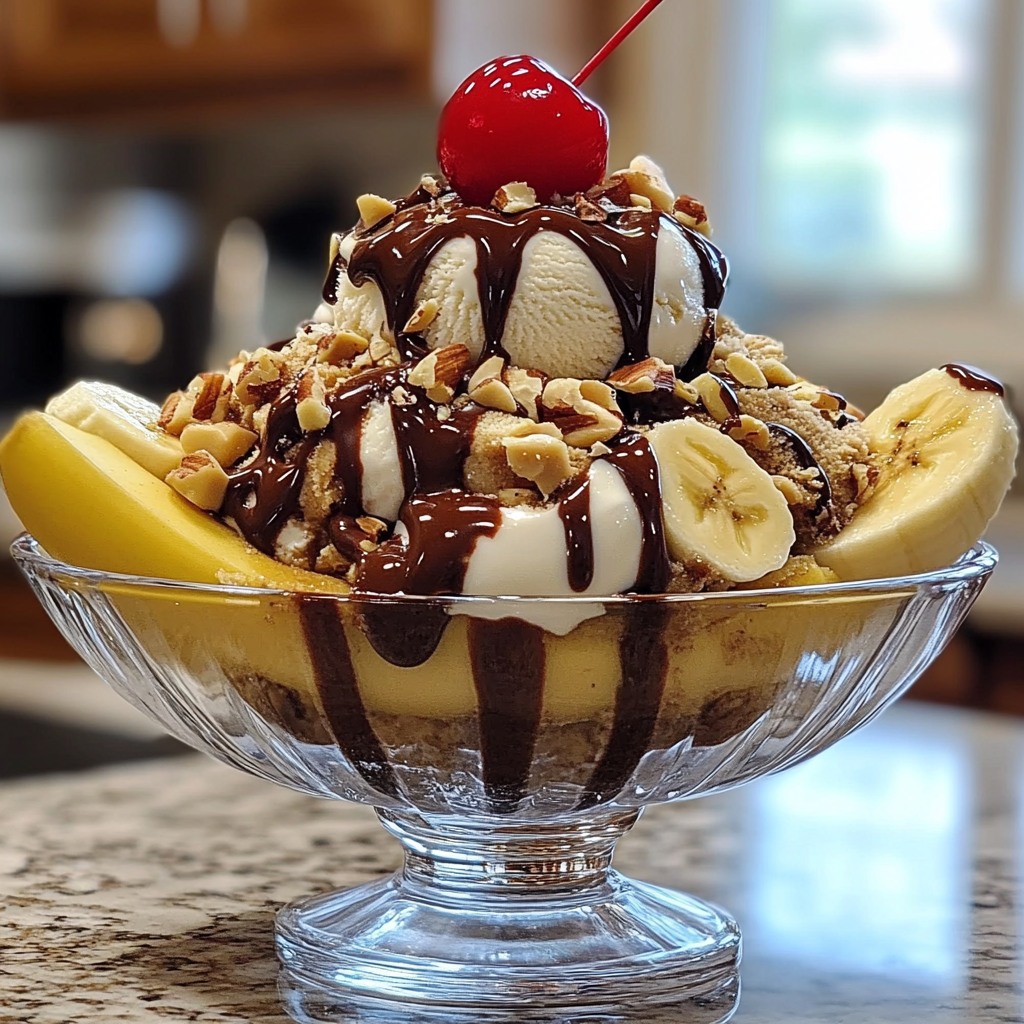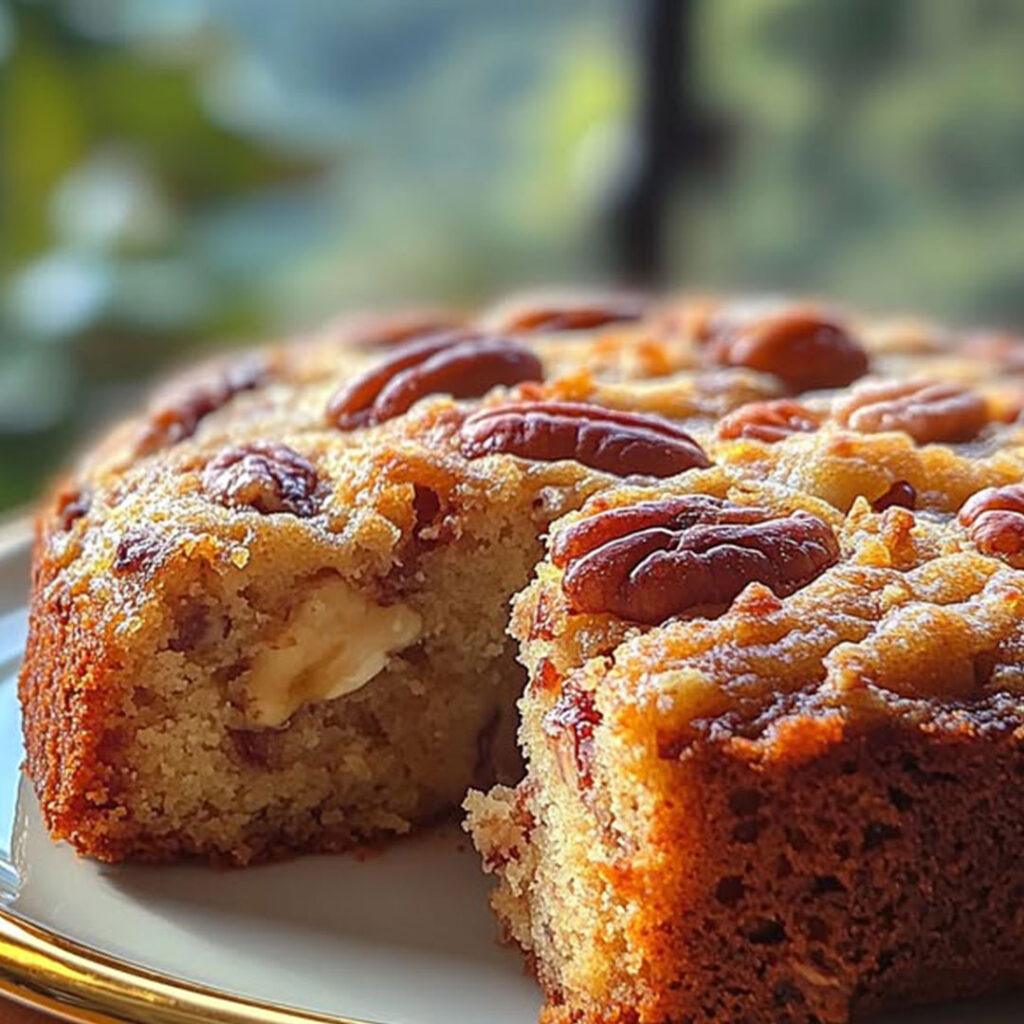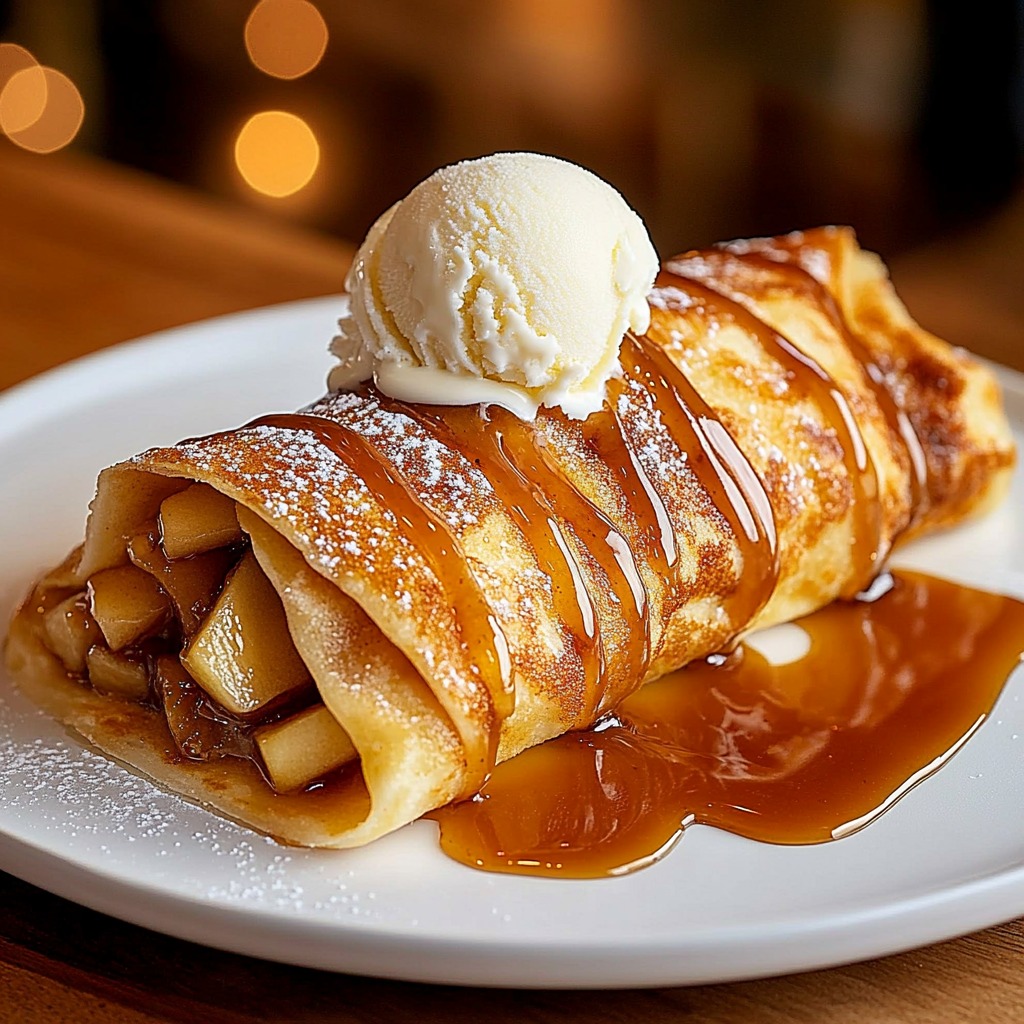Coconut Macaroon Magic: Experience the enchanting taste of Coconut Macaroon Magic—an ultimate guide that transforms simple ingredients into irresistibly chewy and crunchy coconut macaroons. Bursting with tropical flavor and enhanced with creative twists, this step-by-step recipe is perfect for celebrations, everyday treats, and culinary adventures. Dive into detailed instructions, expert tips, troubleshooting advice, and inspiring variations to make your coconut macaroons a masterpiece every time!
Coconut macaroons are much more than a simple cookie; they represent a timeless blend of texture and tropical flavor that has charmed dessert lovers for generations. In many cultures, coconut is celebrated for its rich, natural sweetness and versatility in both sweet and savory dishes. With this recipe, you’re not just baking a treat—you’re embarking on a culinary adventure that brings the essence of a tropical paradise right into your kitchen.
Easy Coconut Macaroons Recipe | So delicious!
Historically, coconut macaroons have been a favorite treat in many parts of the world, from European bakeries to Caribbean homes. Their simple ingredients and rustic preparation method have allowed for countless variations, each adding its own personal twist to the classic recipe. Today’s Coconut Macaroon Magic recipe builds on tradition by incorporating modern baking techniques, tips for perfection, and creative ideas that elevate the humble macaroon to a gourmet dessert.
This guide is designed for bakers of all levels—from the novice eager to try something new to the seasoned pastry chef looking for fresh inspiration. We’ll explore every aspect of the process: from selecting the best coconut to mastering the perfect meringue, and from creative decoration ideas to troubleshooting common challenges. So, gather your ingredients and get ready to bring a taste of the tropics into your home!
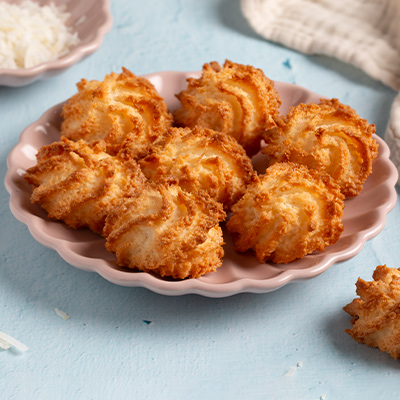
Coconut macaroons recipe,
Coconut macaroons with condensed milk,
Chewy coconut macaroons recipe,
Chocolate coconut macaroons,
Simple coconut macaroon recipe, Coconut Macaroon Magic
Ingredients: Quality Matters for Maximum Flavor
The secret to making perfect coconut macaroons lies in the quality of your ingredients. Each component plays a vital role in achieving that ideal balance of crunch and chew. Below is a comprehensive list of ingredients along with insights into why each is essential and tips for selecting the best quality products.
Ingredients:
Here are ingredient for Coconut Macaroon Magic
Unsweetened Shredded Coconut (3 Cups):
he star of the show! Use high-quality, unsweetened shredded coconut for a pure, natural flavor. You can opt for freshly grated coconut if available, as it adds a unique texture and vibrant taste to the macaroons. Ensure your coconut is finely shredded to maintain an even consistency throughout the batter.
Egg Whites (4 Large, at Room Temperature):
Egg whites form the light, airy meringue base that holds the macaroons together. Room temperature egg whites whip up more voluminously, creating the ideal structure for your cookies. For best results, carefully separate your eggs to avoid any traces of yolk, which can inhibit proper whipping.
Granulated Sugar (1/2 Cup):
This sugar is crucial not only for sweetness but also for stabilizing the egg whites as you beat them. Granulated sugar dissolves slowly during the whipping process, helping to create stiff, glossy peaks that form the backbone of your macaroon structure.
Powdered Sugar (1/4 Cup):
A touch of powdered sugar adds extra sweetness and a smooth texture, ensuring your macaroons are delectably tender inside. It also helps in achieving a slightly refined finish, balancing the natural chewiness of the coconut.
Salt (1/4 Teaspoon):
A pinch of salt intensifies the natural flavors and balances the sweetness of the sugars. It also contributes to the overall stability of the meringue, enhancing the texture of the final product.
Vanilla Extract (1 Teaspoon):
Vanilla is the classic flavor enhancer that complements coconut perfectly. A good-quality vanilla extract will imbue your macaroons with a subtle, aromatic note that elevates the overall taste.
Almond Extract (1/2 Teaspoon, Optional):
For those who enjoy a little extra depth, almond extract adds a delightful nutty nuance to the mix. Use sparingly—it’s potent and can quickly overpower the delicate coconut flavor.
Cream of Tartar (A Pinch):
This ingredient is key to stabilizing your egg whites. Cream of tartar helps the whites achieve a more robust, lasting foam, ensuring that your meringue doesn’t collapse during baking.
Creative Enhancements & Variations
Sweetened Condensed Milk (1/2 Cup, Optional):
For an ultra-moist texture, you can add sweetened condensed milk. This variation produces a richer, creamier macaroon with an added layer of sweetness. If you choose this option, incorporate it gently into the batter after achieving stiff peaks in your egg whites.
Lime Zest (From 1 Lime, Optional):
To introduce a zesty, tropical twist, add finely grated lime zest. The citrus note pairs beautifully with coconut, providing a refreshing contrast to the sweetness of the sugars.
Melted White Chocolate (1/4 Cup, Optional for Drizzling):
Drizzle melted white chocolate over the cooled macaroons for a visually stunning and flavor-rich finish. This addition not only enhances the taste but also gives your dessert a gourmet touch.
Toasted Coconut Flakes (For Garnish):
Sprinkle extra toasted coconut flakes on top of the macaroons before serving. This adds an extra crunch and intensifies the coconut flavor, making each bite even more delightful.
When selecting your ingredients, remember that quality is key. Opt for organic or locally sourced products whenever possible, as they often provide superior flavor and texture, ensuring that every bite of your Coconut Macaroon Magic is truly exceptional.
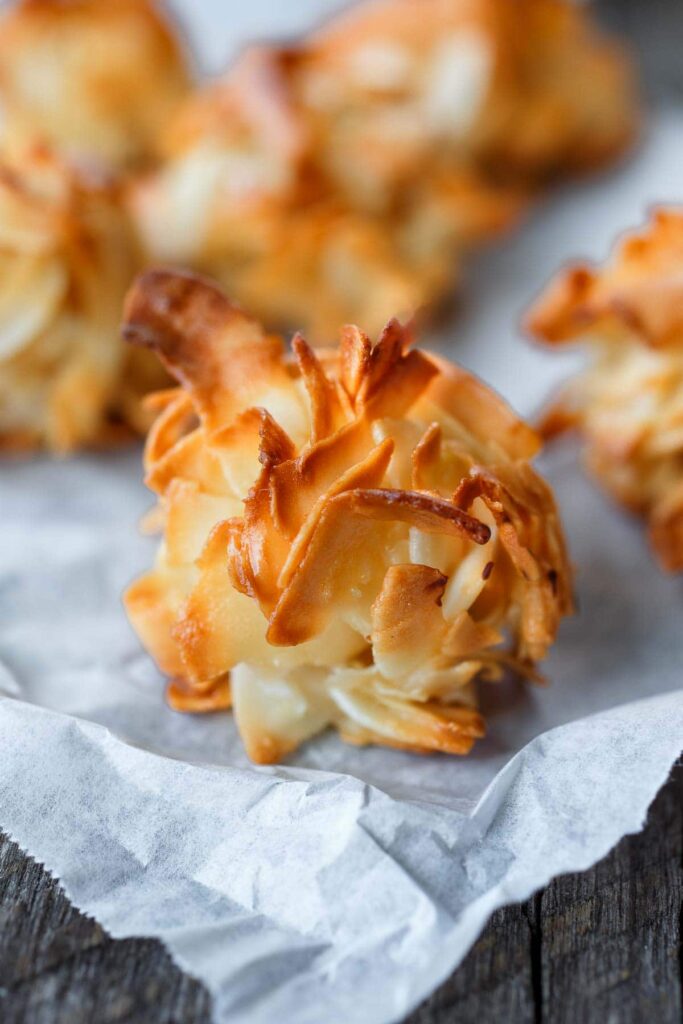
Coconut macaroons recipe,
Coconut macaroons with condensed milk,
Chewy coconut macaroons recipe,
Chocolate coconut macaroons,
Simple coconut macaroon recipe, Coconut Macaroon Magic
Instructions: A Step-by-Step Guide to Coconut Perfection
Here are Instructions A Step-by-Step for Coconut Macaroon Magic
Creating Coconut Macaroon Magic is both an art and a science. The following detailed instructions will walk you through each stage of the process, offering expert tips and insights to help you achieve bakery-quality results. Whether you’re a seasoned baker or a newcomer to the world of macaroons, these steps will guide you to success.
Step 1: Preparation and Equipment
- Gather Your Equipment:
- Two large mixing bowls (one for whipping and one for folding in the coconut)
- An electric mixer (or a stand mixer with a whisk attachment)
- A spatula (preferably silicone for gentle folding)
- A baking sheet lined with parchment paper or a silicone baking mat
- A piping bag fitted with a large round tip or a cookie scoop for portioning
- Measuring cups and spoons
- A cooling rack for transferring baked macaroons
- Preheat Your Oven:
Set your oven to 325°F (163°C). Preheating ensures that your macaroons begin baking immediately once they’re in the oven, which is crucial for achieving the right texture. Adjust your oven rack to the middle position for even heat distribution. - Prepare Your Baking Surface:
Line your baking sheet with parchment paper or a silicone baking mat. This prevents the macaroons from sticking and promotes even browning. If you’re using parchment paper, make sure it is secured on the tray to avoid any shifting during baking. - Room Temperature Ingredients:
Ensure your egg whites are at room temperature. Cold egg whites do not whip as effectively. If needed, let them sit out for about 30 minutes before you begin.
Step 2: Whipping the Egg Whites
- Start with a Clean Bowl:
Use a perfectly clean and dry mixing bowl. Any traces of fat or moisture can prevent the egg whites from reaching their full volume. A glass or metal bowl works best. - Add Cream of Tartar:
Sprinkle a pinch of cream of tartar over the egg whites. This acidic ingredient stabilizes the proteins, making it easier to whip the whites into stiff peaks. - Begin Whipping:
Using your electric mixer, beat the egg whites on medium speed until they become frothy. Gradually increase the speed to high and continue whipping until soft peaks form. This means the peaks should gently fold over when the beaters are lifted. - Gradually Incorporate Granulated Sugar:
With the mixer running, slowly add the granulated sugar. The gradual addition allows the sugar to dissolve properly, resulting in a glossy, stable meringue. Beat until stiff peaks form. This is a critical stage—stiff peaks ensure that the macaroons hold their shape during baking. - Incorporate Powdered Sugar and Salt:
Once your egg whites have reached stiff peaks, gently fold in the powdered sugar and salt. Use a slow, deliberate folding motion to avoid deflating the meringue. This mixture should be smooth and hold a nice sheen, indicative of a well-stabilized meringue.
Step 3: Incorporating the Coconut and Flavors
- Add the Shredded Coconut:
Slowly fold in the unsweetened shredded coconut. It’s important to combine the coconut gently with the meringue, ensuring even distribution without knocking out the air. The coconut not only provides texture but also absorbs the flavors of the meringue. - Flavor Enhancements:
- Vanilla and Almond Extracts: Drizzle in the vanilla extract along with the almond extract (if using). These extracts enhance the coconut’s natural flavor and add a subtle aromatic depth.
- Optional Lime Zest: If you’re opting for a tropical twist, add the finely grated lime zest now. The citrus oils in the zest will mix with the other flavors, adding brightness to the overall profile.
- Optional Sweetened Condensed Milk Variation:
For an extra moist and decadent version, carefully fold in the sweetened condensed milk. This variation creates a richer batter with a slightly denser texture. Keep in mind that this will make your macaroons a bit softer inside, so adjust your baking time if needed. - Mixing Technique:
The key here is to use a gentle folding technique. Use a spatula and carefully combine the ingredients in a circular motion. Avoid overmixing, as this will deflate the air you worked so hard into creating. The final mixture should appear light and airy, with the coconut evenly dispersed throughout.
Step 4: Portioning and Shaping
- Transfer to a Piping Bag or Scoop:
Once your batter is ready, transfer it into a piping bag fitted with a large round tip. Alternatively, you can use a small cookie scoop. This step ensures uniform macaroons that bake evenly. - Portioning the Batter:
Squeeze or scoop out small mounds of the batter onto your prepared baking sheet. Aim for mounds about 1 to 1.5 inches in diameter. Leave at least an inch of space between each macaroon to allow for gentle spreading during baking. - Shaping and Texture:
If you prefer a more defined shape, lightly tap the baking sheet on the counter to settle the batter. This will help the macaroons form a slightly more uniform surface, ideal for drizzling with chocolate or adding extra garnish later. - Visual Check:
The batter should look glossy and thick. At this stage, you can also sprinkle a few extra coconut flakes on top if you desire a rustic, textured appearance.
Step 5: Baking to Perfection
- Oven Placement:
Place your baking sheet in the preheated oven on the middle rack. This positioning ensures even heat circulation and prevents the bottoms from browning too quickly. - Baking Time:
Bake the macaroons for 18-22 minutes. The exact time can vary based on your oven and the size of your macaroons. You’re looking for edges that are just starting to turn golden while the centers remain tender and chewy. Keep an eye on them during the final minutes. - Checking for Doneness:
The macaroons should feel firm to the touch on the edges, while the center may still be slightly soft. If you prefer a firmer cookie throughout, extend the baking time by 2-3 minutes, but be cautious not to overbake, which can lead to a dry texture. - Cooling on the Baking Sheet:
Once baked, remove the baking sheet from the oven and let the macaroons cool for about 5 minutes on the sheet. This brief rest period allows the cookies to set further, making them easier to transfer without breaking. - Transferring to a Cooling Rack:
After the initial cooling, carefully transfer the macaroons to a wire cooling rack. Allow them to cool completely at room temperature. This step is crucial—fully cooled macaroons hold their structure and develop their intended texture.
Step 6: Finishing Touches and Creative Twists
- Optional White Chocolate Drizzle:
For an extra layer of indulgence, melt 1/4 cup of high-quality white chocolate over a double boiler or in short bursts in the microwave (stirring frequently). Using a small spoon or a piping bag, drizzle the melted white chocolate over the cooled macaroons in an artistic pattern. This not only adds flavor but also creates a visually appealing finish. - Garnishing:
Enhance the presentation by sprinkling a few toasted coconut flakes on top. These additional flakes intensify the coconut flavor and add a delightful crunch that contrasts with the soft interior of the macaroon. - Optional Dipping:
For a more decadent treat, consider dipping half of each macaroon into melted chocolate. Place them on parchment paper and allow the chocolate to set completely. This variation adds a luxurious twist and can be a hit at parties or special occasions. - Presentation Ideas:
Arrange the macaroons on a decorative platter, perhaps accompanied by tropical fruits like slices of mango or kiwi. You can also serve them with a side of homemade coconut ice cream or a drizzle of passion fruit coulis to create an unforgettable dessert experience.
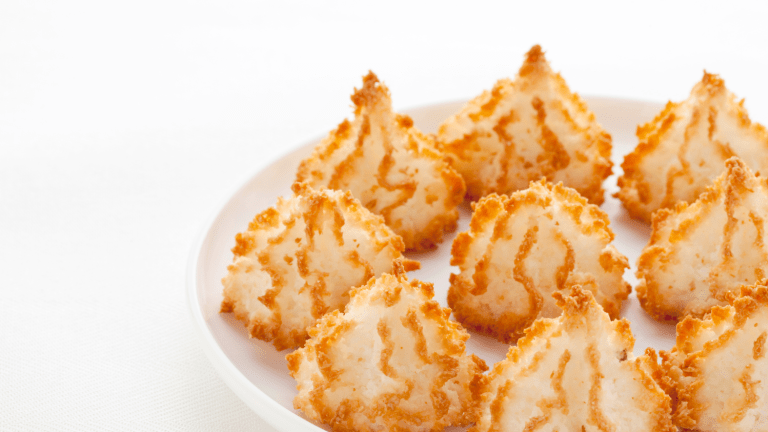
Coconut macaroons recipe,
Coconut macaroons with condensed milk,
Chewy coconut macaroons recipe,
Chocolate coconut macaroons,
Simple coconut macaroon recipe, Coconut Macaroon Magic
Expert Tips and Troubleshooting
Achieving the Perfect Meringue
- Room Temperature Egg Whites:
As mentioned earlier, egg whites at room temperature whip up more voluminously. If your eggs are cold, consider placing them in a bowl of warm water for a few minutes before beating. - Clean Equipment:
Ensure that your mixing bowl and beaters are free of grease. Any residue can cause the egg whites to collapse. - Slow Sugar Addition:
Adding sugar too quickly can prevent the meringue from reaching stiff peaks. Patience is key—gradually incorporate the sugar to allow for proper dissolution.
Maintaining Texture
- Folding Technique:
When incorporating the coconut and flavorings, use gentle folding motions to keep the airy structure intact. Overmixing can lead to dense, heavy macaroons. - Consistent Sizing:
Uniformly sized macaroons ensure even baking. Using a piping bag or scoop will help maintain consistency across all cookies. - Baking Time Adjustments:
Ovens vary, so monitor your macaroons closely during baking. If they start browning too quickly, lower the temperature by 10°F and extend the baking time slightly.
Variations to Explore
- Adding Nuts:
For a delightful crunch, finely chopped almonds or pistachios can be folded into the batter. This adds an extra layer of texture and a unique flavor profile. - Flavor Infusions:
Experiment with different extracts such as coconut extract for a more pronounced tropical taste, or even a hint of rum extract for an adult twist. - Gluten-Free and Vegan Adaptations:
Although this recipe is naturally gluten-free, vegan macaroons can be achieved by replacing egg whites with aquafaba (the liquid from canned chickpeas). This substitution may require additional stabilization (using a pinch of baking soda) and careful whipping to achieve similar results.
Common Challenges and Solutions
- Macaroons Spreading Too Much:
If your macaroons spread too much during baking, the likely culprit is an overwhipped meringue or too much liquid in the batter. Try reducing the amount of sweetened condensed milk (if using) or adjust the mixing technique to maintain structure. - Sticky or Underbaked Centers:
Underbaked centers can be an issue if the macaroons are too large or if your oven temperature is too low. Ensure that the macaroons are uniformly sized and consider increasing the baking time by a couple of minutes if needed. - Deflated Meringue:
This can occur if any fat (even a small amount from egg yolk) contaminates the egg whites. Take extra care during separation and ensure that all utensils are spotless.
This comprehensive guide not only provides you with the perfect recipe for Coconut Macaroon Magic but also equips you with insights, variations, and expert advice to ensure your success in the kitchen. Enjoy the magic of coconut, and let every bite remind you of the tropical paradise waiting to be discovered in your very own home.
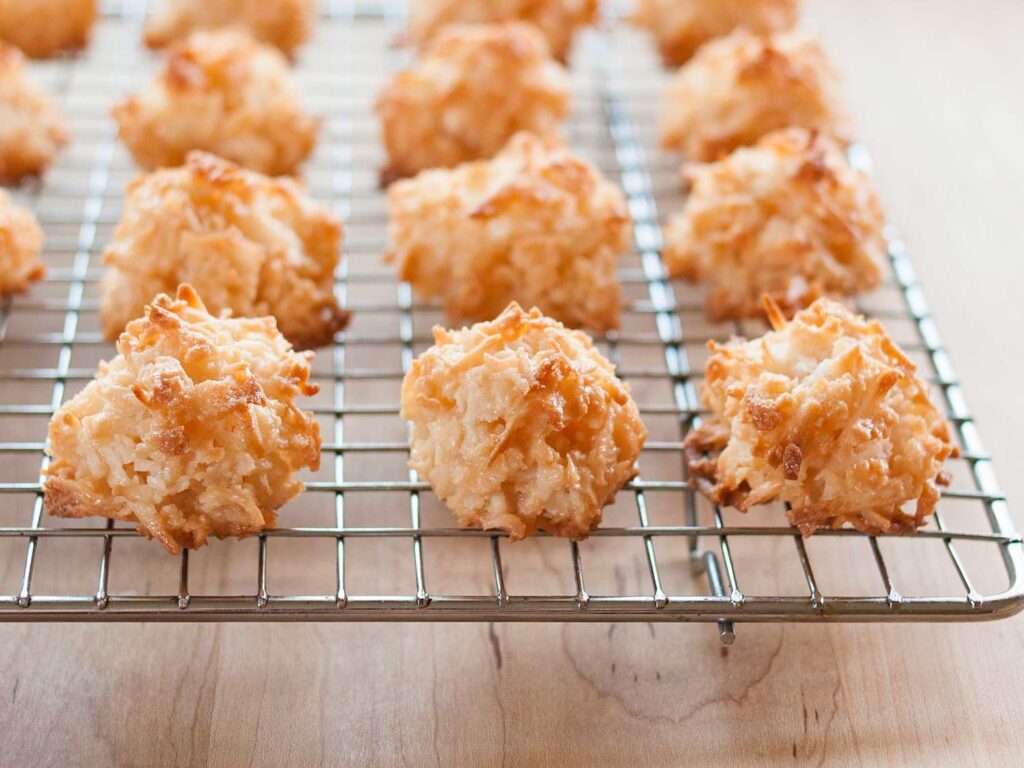
Coconut macaroons recipe,
Coconut macaroons with condensed milk,
Chewy coconut macaroons recipe,
Chocolate coconut macaroons,
Simple coconut macaroon recipe, Coconut Macaroon Magic
FAQs:
What’s the difference between a coconut macaroon and a macaron?
What’s the Difference Between a Macaroon vs.a Macaron?
- A macaroon is a shredded coconut, egg white and sugar based cookie while a macaron is a ground almond, egg white and sugar based cookie.
- Their preparations methods are much different, as well as their taste and textures.
Are coconut macaroons good for you?
These coconut macaroons are full of healthy fats and fibre. Coconut is very nutritious and is a good source of a number of key minerals including manganese, copper and selenium. These macaroons are also lower in sugar than most sweet snacks so they’ll help to stabilise your blood sugar. They are also gluten free.
What are the 2 types of macaroons?
A French macaron will typically be flatter with a larger, almost ruffled texture at the flat end of each shell. While an Italian macaron stands taller with a more rounded top, and looks generally more trim and tidy.
How long do coconut macaroons last?
1 week
Coconut macaroons can last for up to 1 week if you store them in an airtight cookie storage container. To make them last longer, you can freeze them by placing them in a single layer on a sheet pan in the freezer.
Is it OK to freeze coconut macaroons?
If you’re planning on rationing your macaroons so that you always have a gluten free treat on hand whenever you want it, by all means freeze your coconut macaroons! Macaroons freeze really well, so you don’t have to worry about anything happening to them while they’re in the freezer.
Why are macaroons so sweet?
We use two types of sugar in macarons: granulated (or caster sugar), and powdered sugar. Granulated sugar (or caster) is added to the egg whites to help form the meringue.
What is the best way to store coconut macaroons?
Most macaroons, including Nigella’s Coconut Macaroons (from HOW TO BE A DOMESTIC GODDESS), freeze well. Put the fully cooled macaroons in airtight containers and freeze for up to 1 month. If you need to stack the macaroons in the container then put a layer of baking parchment (parchment paper) in between the layers.
